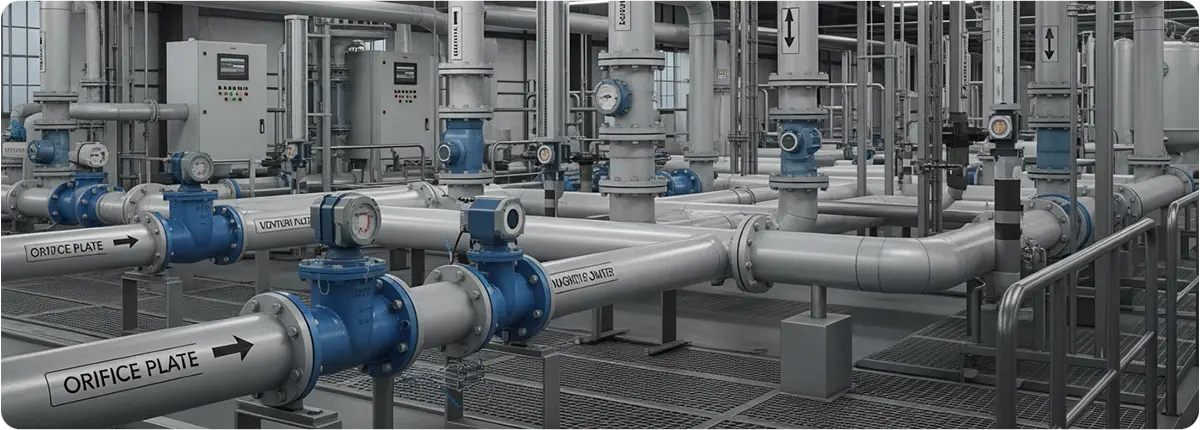Flow measurement is one of the most fundamental parameters in industrial processes. Accurate flow measurement is essential for production efficiency, energy optimization, process safety, and product quality.

PRINCIPLES OF FLOW MEASUREMENT
Flow rate is defined as the quantity of fluid passing through a cross-sectional area. The basic formula is:
Q = A · v
Where Q is volumetric flow rate (m³/s), A is cross-sectional area (m²), and v is flow velocity (m/s).
Mass flow rate can be expressed as:
ṁ = ρ · Q
Where ṁ is mass flow rate (kg/s), ρ is fluid density (kg/m³).
TYPES OF FLOW MEASUREMENT DEVICES
- Orifice Plates: Simple and cost-effective, but with higher pressure losses.
- Venturi Tubes: Provide higher accuracy with lower pressure drop.
- Pitot Tubes: Suitable for gases and low-viscosity fluids.
- Electromagnetic Flowmeters: Highly accurate for conductive liquids.
- Ultrasonic Flowmeters: Offer non-contact measurement.
- Mass Flowmeters (Coriolis): Directly measure mass flow with high precision.
FACTORS AFFECTING MEASUREMENT ACCURACY
- Changes in fluid temperature and viscosity
- Pipe diameter and roughness
- Installation position of the flowmeter
- Calibration and maintenance issues
STANDARDS AND CALIBRATION
- ISO 5167: For orifice, venturi, and nozzle-based flow measurement devices
- ISO 4185: Standard for flowmeter calibration
- ISO 17025: Accreditation for calibration laboratories
APPLICATION AREAS
- Flow monitoring in water and wastewater treatment plants
- Steam and fuel flow measurement in power plants
- Reactor and pipeline flow control in chemical industries
- Liquid flow control in food and beverage industries
CONCLUSION
Flow measurement systems are critical for ensuring reliable and efficient production in industrial plants. Proper device selection, correct installation, and regular calibration guarantee process continuity and safety.